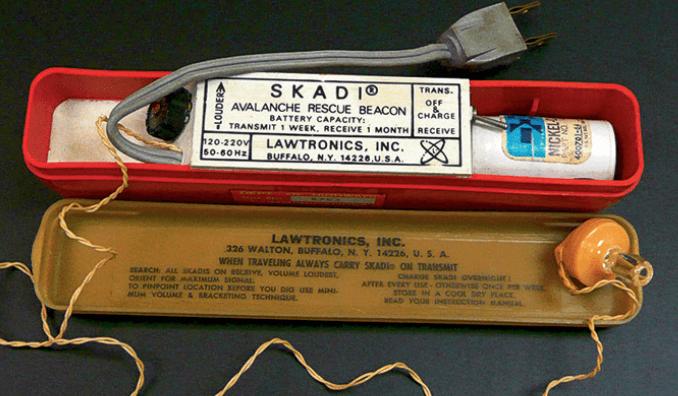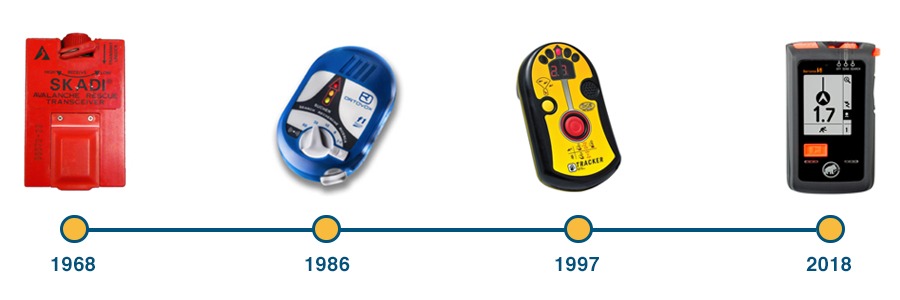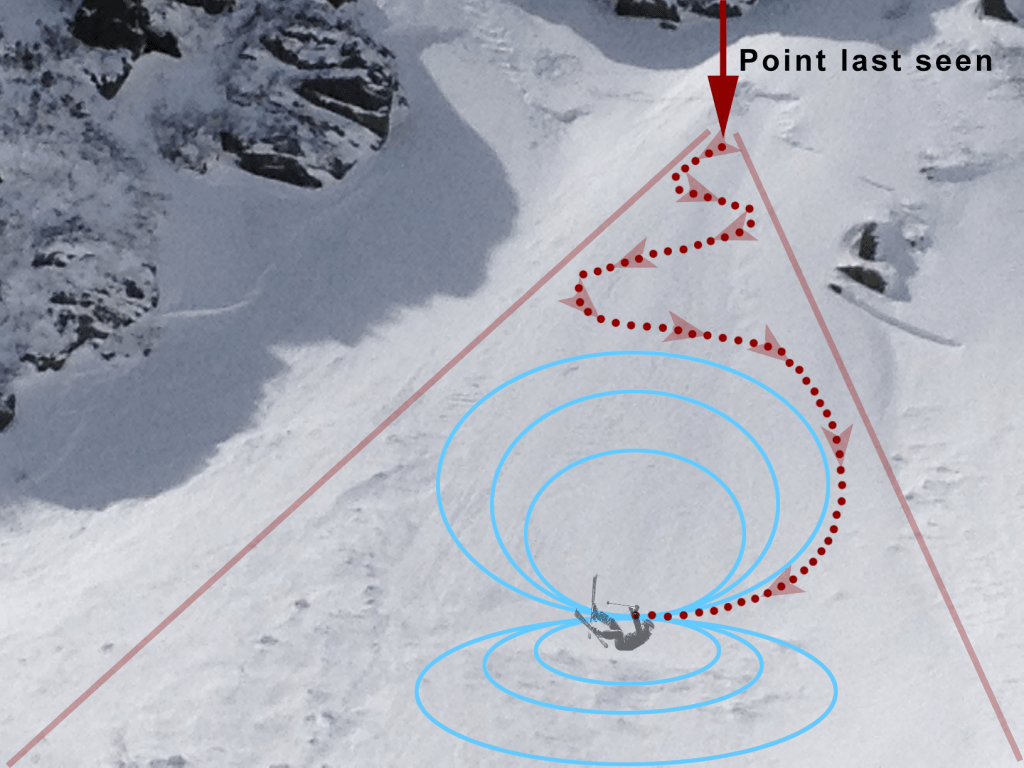
Have you ever wondered how avalanche beacon technology works? Or even what people did out in the backcountry before modern beacons? Well, up until 1968, there were no avalanche beacons, at least not in the form we recognize today.
Dr. John Lawton invented the first avalanche beacon in 1968 at Cornell and it was on the market in 1971. Ed Lachapelle, a well-known avalanche expert, worked with Lawton on his design and influenced the final product. The first beacon was called a Skadi, affectionately known as a “Hot Dog”, and it radiated a magnetic field by pulsing electricity through a copper coil. The receiving unit picked up this magnetic field and produced a sound in an earphone which helped the user find the victim.

Since then, the technology has evolved to work more quickly, with a longer range. In 1986, there was an increase in the frequency of analog transceivers, so they had a wider range. In 1997, Backcountry Access made the first digital transceiver which then became the new technological norm.
Today, digital transceivers have taken the market by storm and added many features such as an LCD interface, a function to flag multiple burials, and multiple antennas. Digital transceivers offer a higher victim recovery rate and they work faster. There are a plethora of options out there so it’s important to do your research before buying an avalanche beacon.

In addition to a beacon, there is lots of other avalanche safety gear to consider. Generally, it is important to also carry a shovel and probe, since once you find your victim, you need to pinpoint their location and dig them out. Additionally, there are avalanche airbags which can be deployed to help avoid being buried, or at least not be buried as deep. There are also a wide variety of airbags to choose from.
Even if you are staying inbounds and maybe just hitting some rowdier lines at the resort, consider wearing a RECCO reflector. A RECCO reflector is a small electronic transponder that will make you searchable to rescuers even if you don’t have a beacon, though it can be used in conjunction with a beacon as well. The reflector should be attached to clothing that wouldn’t be torn off in an avalanche, it doesn’t require power, will never lose signal strength, and is maintenance-free. So, even if you don’t want to drop the big bucks on an avalanche beacon, there is no excuse for at least making yourself searchable to rescuers.
More info at https://beaconreviews.com/